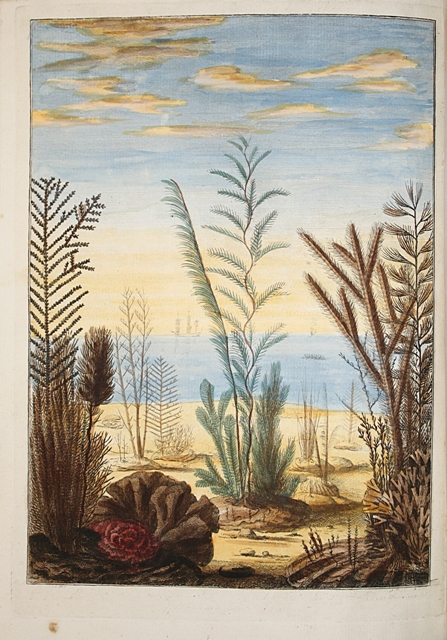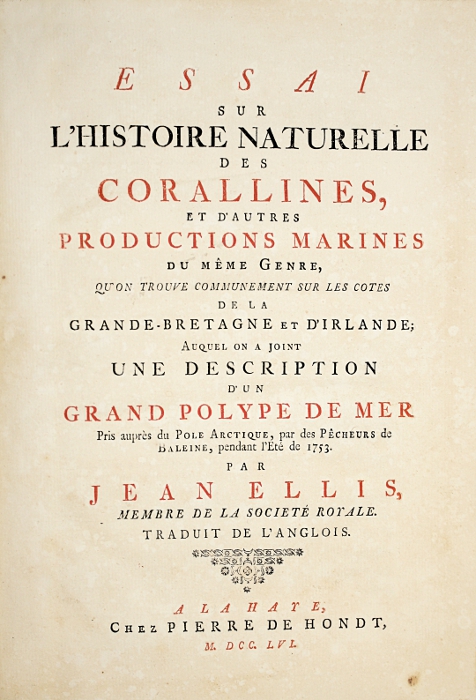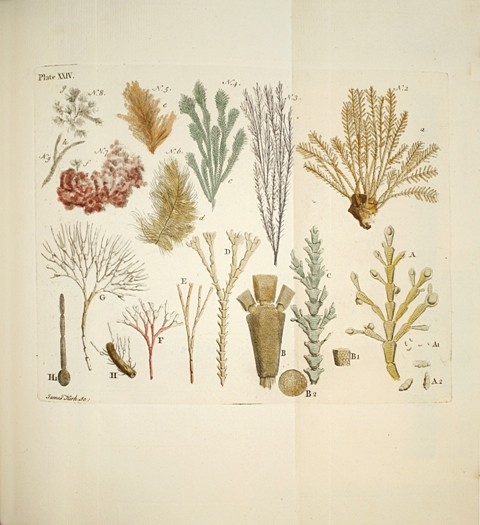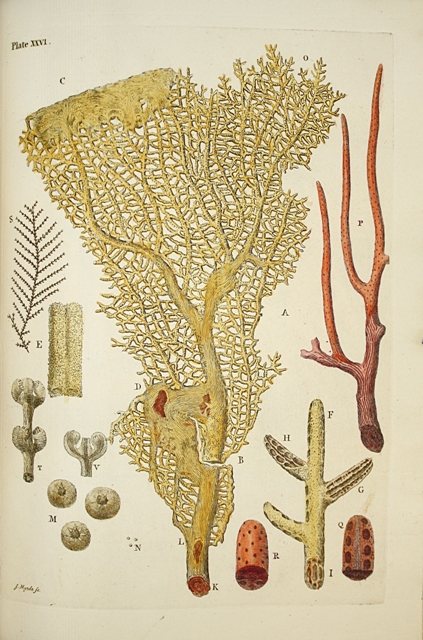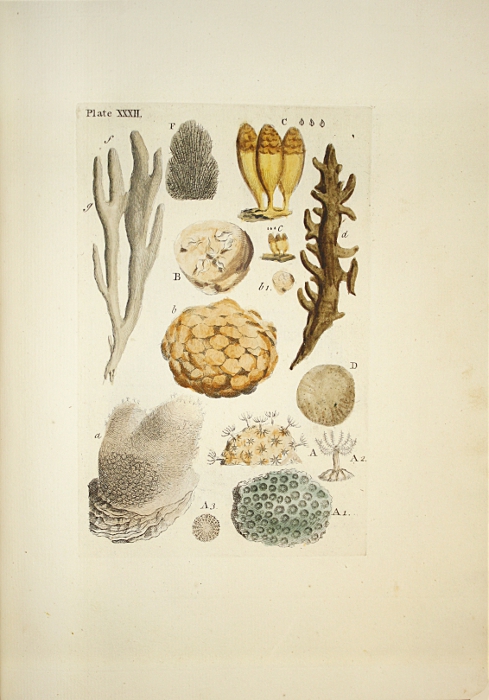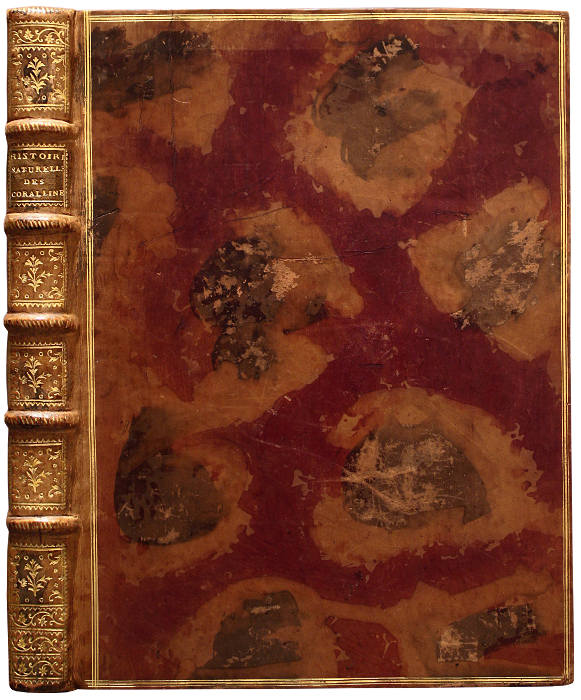La Haye, Pierre de Hondt, 1756.
4to [270 x 204 mm] of 1 engraved frontispiece, xvi pp., 125, (3), 39 numbered plates out of pagination. Bound in full contemporary porphyry calf, triple gilt fillet on the covers, spine ribbed and finely decorated, brown morocco lettering piece, marbled edges. Contemporary binding.
First and only edition of the French translation of this interesting work about the natural history of the corallines that can be found on English coasts. Brunet, II, 963; Nissen, BBI 590; Stafleu & Cowan, Taxonomic lit. 1661; DNB, 17, p. 385; Stafleu, Linnaeus and the Linnaêns, p. 151, 236, 1971; Plesch, p. 217; Blanche Henrey, British botanical and horticult. lit., II, p. 283.
This edition was published just a yêr after the English original.
John Ellis (1710-1776) was an Irish naturalist. Linen merchant in London, he was commissioned to Florida in 1764 and to the Island of Dominica in 1770, he sent to Grêt Britain many American seeds. Ellis was particularly interested in the transportation of seeds and plants. He corresponded with Carl Von Linné (1707-1778) who described Ellis as a “natural history star”. He became a member of the Royal Society in 1754.
“Ellis published in 1755 an “Essay about the natural history of corallines”, a work that was translated the next yêr into French and that sprêd in every library, where it is daily used; the plates were of very good quality for that time, and have been often mentioned” (Encyclopédie méthodique, II, p. 639).
A few rare copies were printed on large paper, “with the engravings very clênly and finely illuminated from life». (V. Donati, Essai sur l’histoire naturelle de la mer Adriatique, p. 75).
The outstanding illustration is composed of a frontispiece and 39 plates out of pagination, including 5 folded, depicting plants and sêweeds. All the plates have been engraved by James Kirk, J. Mynde and H. Roberts from Ehret‘s drawings. This copy belongs to the deluxe issue, with all the 40 engravings finely illuminated by hand at the time.
A precious copy of the best work about coral in the 18th century, one of the very few printed on large paper and entirely illuminated at the time, preserved in its elegant contemporary binding in porphyry calf.
See less information

